In a visionary leap for Bangkok’s transportation infrastructure, the city’s newest subway line, dubbed “Purple Line South,” is delving to unprecedented depths, with tunnels reaching an astounding 41 meters beneath the surface. Scheduled for completion in 2027, this ambitious project marks a significant milestone in Thailand’s urban transit development.
Spanning from Tao Poon Station to Rat Burana Station (within the Kanchanaphisek Outer Ring), the Purple Line South will feature the deepest subway tunnel in Thailand, navigating beneath the majestic Chao Phraya River. This critical link will connect commuters between Bangkok’s old city, with stations at Sam Yod and Buddha Monthon Park, and Thonburi on the opposite bank, anchored by stations like Samphanthawong and Phutthamonthon Sai. While not the nation’s first river-crossing subway, it represents a monumental engineering feat in its own right.
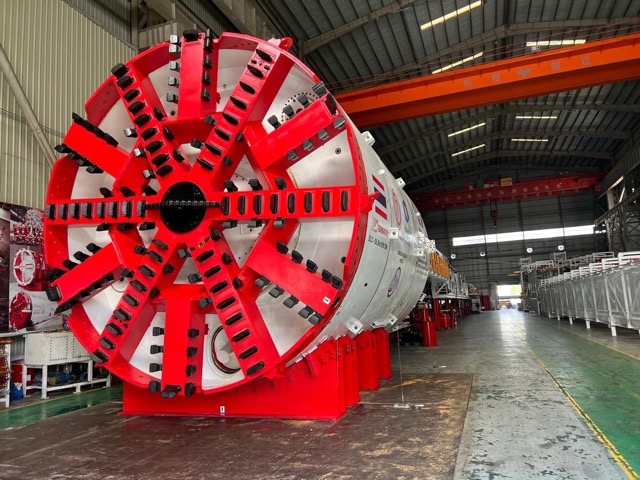
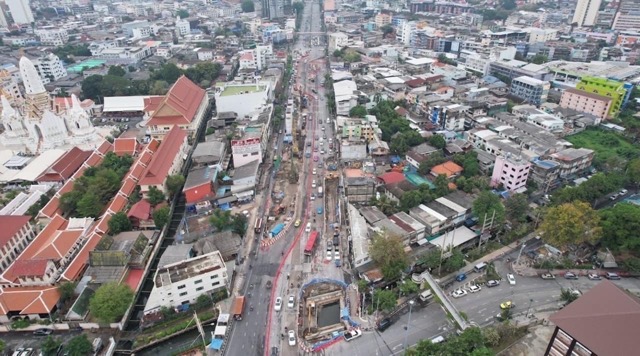
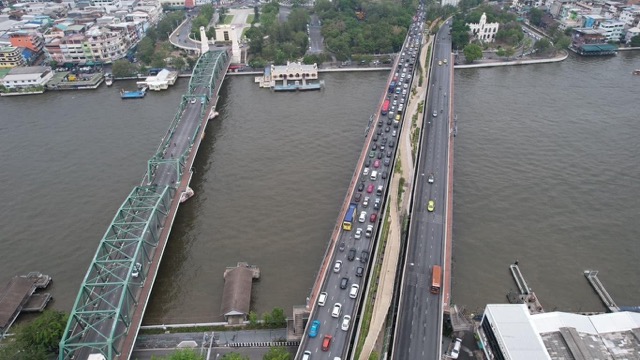
The Purple Line South’s tunneling and underground station construction fall under the third contract of the project, spearheaded by Italian-Thai Development Public Company Limited and Nawarat Patanakarn Public Company Limited. With groundwork commencing on March 25th, 2020, the project is overseen by the Mass Rapid Transit Authority of Thailand (MRTA).
Initial construction phases involve site clearance and preparatory work for tunnel boring. This involves assembling and deploying the necessary equipment, including tunnel wall segments, excavation machinery, and earth-moving vehicles. Once these preparatory tasks are complete, tunnel boring machines will commence their journey, covering a distance of 2.2 kilometers between the skytrain section and Phutthamonthon Bridge. Tunnel excavation, slated to begin in early 2025, is estimated to take approximately 18 months, with completion anticipated by the end of 2026.
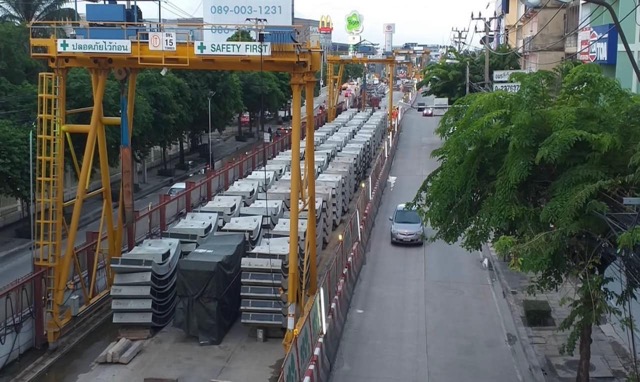
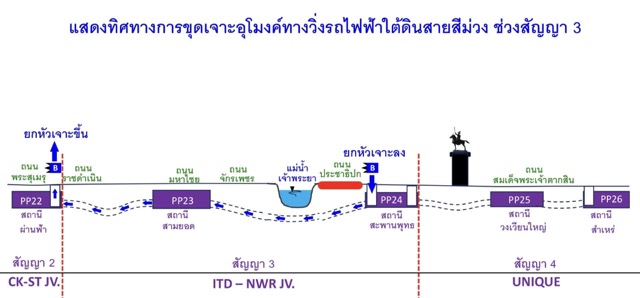
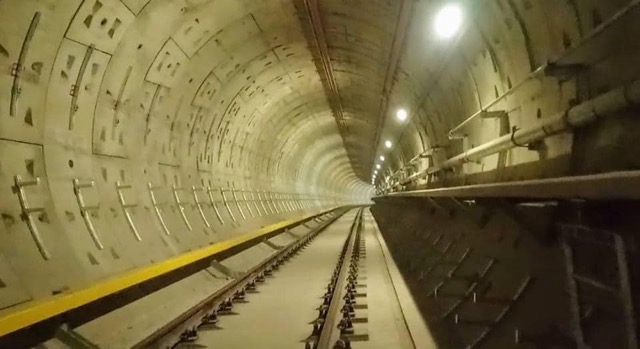
The tunnels will reach a maximum depth of 41 meters below street level, with a midpoint beneath the Chao Phraya River approximately 900 meters from the Phutthamonthon station and 1.3 kilometers from Sam Yod station. Notably, these depths surpass those of the original Chao Phraya River crossing by the Blue Line extension, where the deepest point measures 38 meters.
This venture poses unique challenges for the construction teams involved, notably due to the need to navigate through densely populated urban areas. Unlike previous tunneling projects, the Purple Line South’s route necessitates traversing residential neighborhoods, driving the decision to dig deeper to avoid disrupting communities.
To mitigate potential risks associated with such deep excavation, the project employs state-of-the-art Tunnel Boring Machines (TBMs) equipped with Earth Pressure Balance Shields (EPB Shields). These machines maintain balanced soil pressures during excavation, preventing ground movement and soil subsidence. Furthermore, a comprehensive segmental lining system reinforces tunnel walls, ensuring structural integrity and water-tightness.
Safety remains paramount in the design and execution of the Purple Line South’s infrastructure. Designed to withstand seismic events with accelerations up to 0.06 g, the tunnels incorporate robust structural elements to safeguard passengers. Emergency egress routes, ventilation systems, and emergency lighting further enhance passenger safety.
As the project progresses toward its completion target in 2027, stakeholders anticipate a transformative impact on Bangkok’s transportation landscape. With each milestone achieved, the Purple Line South inches closer to its role as a vital artery in the city’s urban transit network, promising enhanced connectivity and mobility for millions of residents and visitors alike.


